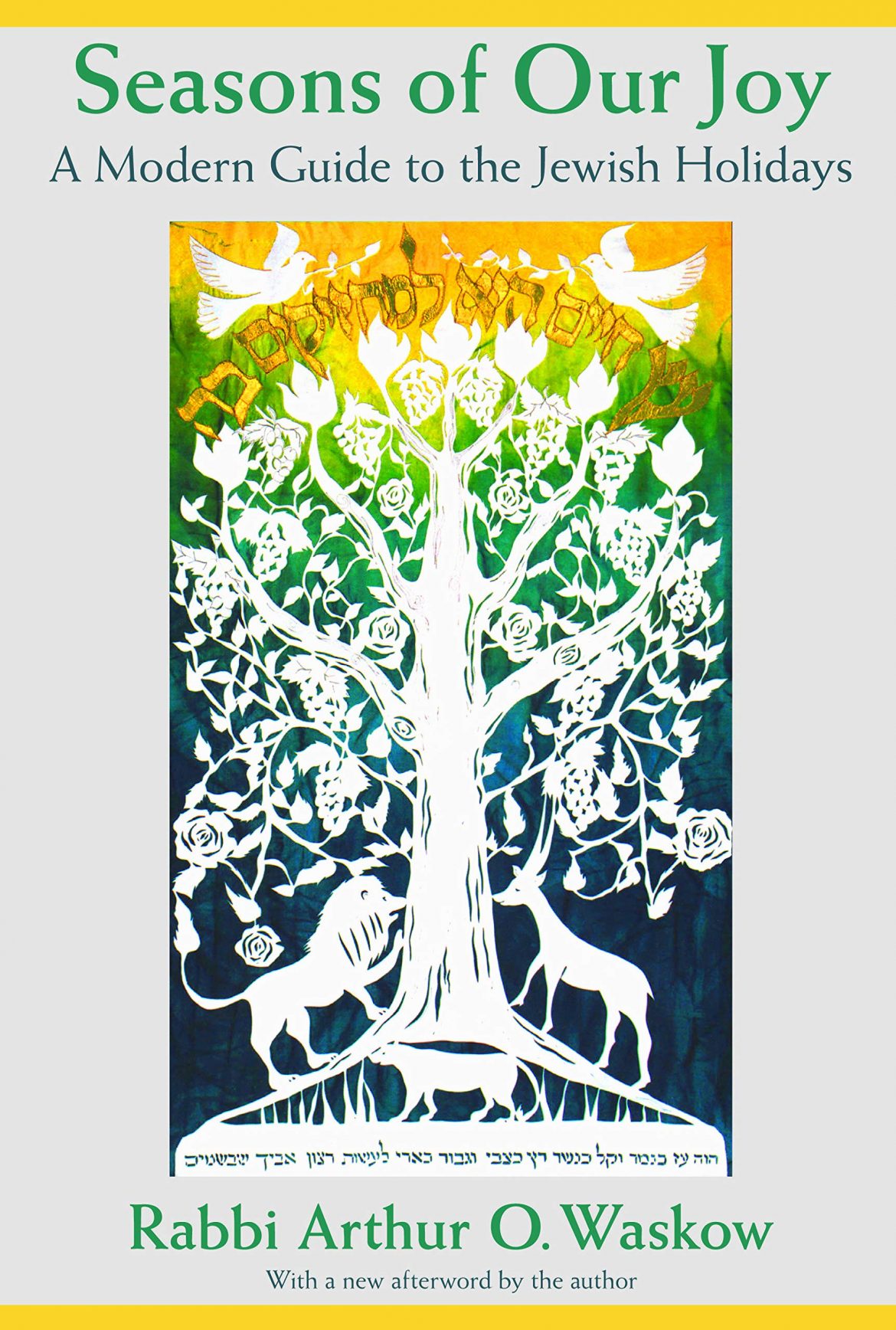A book review by Rabbi Jill Hammer
Arthur Waskow’s Seasons of Our Joy: A Modern Guide to the Jewish Holidays, was first published by Bantam Books in 1982. I can remember the first time I opened its pages, and how enchanted I was by what I found. Waskow’s vision of the Jewish year was not a square linear calendar with torn-off sheets, but a circle, a mythic yearly life cycle through which Jews journey, festival by festival. His vision transformed the way I experienced Jewish time. My own book on the Jewish calendar, The Jewish Book of Days, could not have been written had I not first read Waskow’s vivid telling of the Jewish pilgrimage through the seasons. Seasons Of Our Joy has been re-released by the Jewish Publication Society for its fortieth anniversary with new creative festival approaches, and continues to provide a feast of ritual practice, historical commentary, and a birds-eye view of the Jewish calendar that remains innovative two generations later.
Waskow’s overview of the year suggests two interlocking cycles “intended to teach us how to experience more fully the profound patterns of the world” (p. xviii). The first of the two cycles, a year-long, includes the festivals of Passover, Shavuot, Sukkot, and Shemini Atzeret/Simchat Torah. Waskow memorably identifies these four festivals with birth, maturity/encounter, fulfillment, and dying/rebirth. The second cycle is a month-long and takes place in Tishrei. This cycle has the same four stages: Rosh haShanah (birth), Yom Kippur (maturity/encounter), Sukkot (fulfillment), and Shemini Atzeret (dying/rebirth). Waskow’s map provides a view of the calendar that is linked to but not limited by the historical meanings of each holiday. That is, Pesach is not only about the Exodus but about movements of the earth’s seasons and of the human soul. This is a welcome departure from “they tried to kill us, we survived, let’s eat.” Waskow effectively presents the Jewish holidays as a spiritual practice that invites human growth, and in doing so, he does an end-run around worn-out holiday narratives.
Waskow supports this vision of patterning Jewish time with considerable detail: an analysis of liturgy, Torah readings and ritual for each holiday (all the above plus Chanukah, Purim, Tu b’Shevat, the Omer, Tisha b’Av, and brief discussions of other minor holidays), observations about how each sacred season connects to natural cycles, and even recipes (which I confess I haven’t tried, though they look delicious). Scattered throughout these chapters are interpretive gems, such as the connection of Rosh haShanah’s tashlich (casting away) ritual with the story of the sending away of Hagar and Ishmael, or the link between the book of Eichah (Lamentations) read on Tisha b’Av and the question—”Ayeka? Where are you?” that God asks Adam and Eve in the garden of Eden. Waskow interweaves his informative text with a strong sense of social justice, always asking how a particular festival can be used as an opportunity to protest oppression. He suggests making Purim a day to challenge oppressive power of all kinds, or pursuing interfaith and intercultural covenants on Shavuot, the day of covenant with God.
Throughout the book, from Rosh haShanah at the new moon to Chanukah near the winter solstice, the theme of nature remains primary. Waskow can certainly be named one of the founders of the Jewish earth-based movement, and one of his great contributions is his understanding of the calendar as connected “to nature, to history, and to our spiritual lives.” (p. xviii). This has, of course, always been true, but it has not always been emphasized. Waskow has managed to recenter the earth-based visions of Jewish time while continuing to probe its psychological and spiritual dimensions. While some of the historical analysis could be updated, Waskow’s basic vision remains clear and compelling.
Waskow adds sections on contemporary approaches to each holiday, including activist rituals, reflections on ways to honor women’s experience, and more. These sections are a little shorter than one would wish, and for some holidays the section doesn’t appear, which is disappointing. Which is why Waskow’s new afterword, written for this edition of the book, is truly needed. In his afterward, Waskow revises his language about God (to be less gendered and more earth-based) and offers updated reflections on each holiday, including a moving description of a Tu b’Shevat protest planting redwood saplings on logged ground, and a vivid description of the practices of Maimouna, the Moroccan Jewish celebration at the end of Pesach. Particularly compelling to me is Waskow’s call to transform Tisha b’Av into a day of grieving for Temple Earth and committing to transform our relationship to the planet on which we live. (There could be even more added here—like transforming the guilt of Yom Kippur into something more psychologically useful. And the brief mention of Tu b’Av on page 29 is not nearly enough—something to add to the next edition!)
As with his other books, Waskow maintains both a practical and a mystical focus: “The circles of the sun, and of the moon, of a single human life… an entire people’s history of renewal, of every quiet act of newness, birth, creation—all are echoes of One Circle.” (p. xxiv) This language suggests that the calendar itself is an embodiment of unfolding divinity—a temple in time. Or, we might more accurately call it a pilgrimage in time. Consider me a devoted pilgrim– Waskow’s multisensory, panentheistic approach to the Jewish year still moves me deeply after many turns of the Jewish wheel of time.

In my mind there is no such thing as a Judaism devoid of Palestinian liberation, repentance, and debunking Zionism. Everything else is a privileged distraction and avoidance of the central issues of the current issues that include incremental genocide of the Palestinian people. We cannot accept “let’s go pray” and spiritual uplift as substitutions.